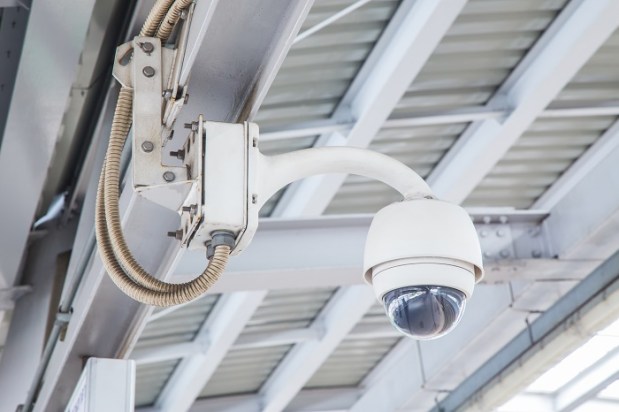Shrinking The Shrinkage Problem With Biometric Network Surveillance

A guy walks into a pharmacy, does a lap and walks out without buying anything. An hour later, he walks into another location of the same chain pharmacy two miles down the road and does the same lap, again not buying anything. And in another hour, he does the same routine at yet another location two more miles down the road, still buying nothing.
That’s pretty suspicious, but the individual pharmacies involved are unlikely to recognize it as such, even if they review security footage. After all, the guy was only there for five minutes, and he didn’t go back to the same pharmacy throughout the day, so employees at the second and third location don’t get the benefit of anything that may have been observed by employees at the first.
Otto Lowe, CFO at DeepCam, says that’s why network intelligence is needed: a video surveillance system across chain retailers that doesn’t just catch suspicious activity in one store at a time, but identifies patterns, trends and repeat actors across multiple locations and large populations.
The Shrinkage Problem
Citing the National Retail Foundation, Lowe said inventory shrinkage accounts for $48.9 billion in U.S. retail losses each year, or 1.5 percent of gross profits. That’s like a retailer doing $100 in sales, making $6 in gross profits and losing 1.5 percent of that to theft and other types of shrinkage.
That’s as much as 25 percent of gross profits, said Lowe — vanished into thin air. Some retailers catch as few as 10 percent of shoplifters, which Lowe added can be members of the public (customers) or internal actors, i.e., employees of the company such as cashiers and shelf stockers.
DeepCam’s end goal is to reduce inventory shrinkage through shoplifting. Admittedly, said Lowe, not all inventory shrinkage is due to theft, and the degree of the problem varies in severity from one location to the next, as well as by industry, but the ability to identify that one sketchy guy making the rounds in a single city can certainly help reduce it.
Network Surveillance’s Time to Shine
Lowe listed two scenarios where a security network can help chain retailers.
First, in the event of organized retail crime: This isn’t just an individual with sticky fingers, he said. These are gangs that have shopping lists and know what they can resell quickly for cash. Gangs will systematically hit chain retailers over and over in different locations.
With traditional video surveillance, each store discovers the faces and intentions of that gang when it comes through their doors. But with network surveillance, every store in a geographic area can have that intelligence as soon as the gang hits store No. 1 — and with biometric identification driven by artificial intelligence, the system itself can raise the red flag when gang members enter another store, rather than relying on human managers and cashiers to recognize criminals.
In short, there is a network benefit once a face is known, said Lowe, and from there, the retailer can take action according to company policies. Facial recognition and artificial intelligence work together across the network to identify potential issues and bring them to the chain’s attention early.
The second scenario in which network security can help is an instance like the example above, where a customer is making the rounds among local stores of the same chain. He may not be walking out with his pockets stuffed, but there is a definite chance he’s up to something suspicious, and Lowe said that a strength of network security is being able to pinpoint telltale behaviors such as this.
Lowe added that it’s not about arresting thieves and bringing them to justice. Prosecuting shoplifting is incredibly hard, Lowe said, because it’s not defined as “shoplifting” until the person is outside the store with the stolen goods — and by then, they’re gone.
Data, Privacy and Security Concerns
Video surveillance has been present in physical retail for decades now. Shoppers are used to being on camera, Lowe said. What DeepCam does is no different: The system is not identifying customers or tying them to any sensitive information such as name, address, date of birth or Social Security number. It simply recognizes faces and identifies patterns of behavior that could be worth investigating.
Lowe said video surveillance is old news; the ability to do something like this with it is an exciting and necessary new space to explore. But it’s still very early days for that space. The security concerns are very real, he said, particularly when talking to financial institutions as opposed to retailers.
As the industry shifts away from static PINs and passwords and toward biometric identifiers, Lowe said the security of those identifiers and of consumers’ personal data must be paramount.
What’s Next
Today, said Lowe, DeepCam’s technology is needed for security. Tomorrow, it could be leveraged for other purposes such as payment and rewards application, just as smart stores like Amazon Go are using computer vision to conduct invisible transactions and eliminate the checkout line.
Amazon Go may be an intriguing and innovative experiment, said Lowe, but to scale, its technology will need to do more. It must be able to distinguish individuals on a much larger scale — in populations of millions, not just small pockets of local Amazon Prime members.
Lowe said DeepCam’s ability to do this could position it well to start moving in that direction in the coming years.
